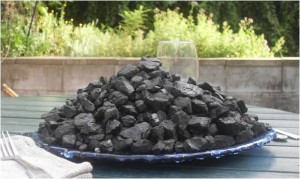THE BELOW CALCULATIONS ARE INCORRECT. PLEASE GO TO THIS LINK TO SEE THE CORRECT NUMBERS.
During our first class of the semester, while discussing the coming trip to COP20, Neil asked the mosaic to think about the costs of traveling thousands of miles in order to be a part of high-level climate negotiations. For this part of the semester we will not be riding our bikes down the street for class, we will be flying. Air travel is an extremely carbon intensive way to get around, but our only realistic choice (we could sail?). He asked us to reflect on this and during this reflection to ask ourselves how is the carbon emitted from traveling there worth it?
In order to do this I needed to quantify those emissions. Using EPA values for air travel and the emissions per mile of CO2, N2O, and CH4. I then converted those three values into carbon dioxide equivalent values using an EPA calculator. The results are below in Table 1. If you would like the excel worksheet to use for yourself please comment below with an email address. For simplicity’s sake I used four flights as the entire trip. Some of the mosaic will be traveling elsewhere in South America or not returning to Washington DC after the meeting. The four flights are: Flight 1 from Dulles to Panama City, Flight 2 from Panama City into Lima, Flight 3 from Lima to Panama City, Flight 4 from Panama City to Dulles. While this may not be each member of the mosaics travel plans it is easier to group all of us into one. The results are in Table 2. Each flight assumes a total capacity of 177 passengers and spreads the emissions out, per passenger. This means that, according to the EPA, each passenger would be emitting the same amount of carbon as about 25 pounds of coal would, when burned.



The question I ask myself now is how do I make that worth it? It may not be a huge amount of carbon emitted, but it is still some and I the entire trip will only be resulting in more. This investigation also brought to mind an article in the Wall Street Journal about the coming “People’s Climate March” in NYC. The author points out the amount of emissions that will result in traveling to and from NYC for the marchers. This could be seen as a counterproductive practice, but I think that it is a good point to make. If we treat emissions from travel similar to an investment, can we assume that some sort of positive return will be had? When the mosaic flies to Peru, we have to work as hard as possible to make sure that the cost of our traveling there is not a negative impact on the atmosphere in the long-term, but that it leads to further reductions down the road. Whether that is from the readers of our blog or directly related to something learned from the COP.
